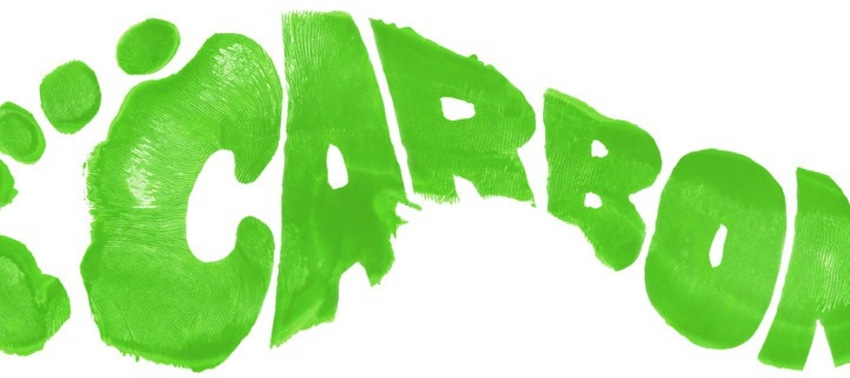July 24, 2017

For Walmart, sustainable packaging has a new mantra: everyday low carbon footprint.
This new emphasis is a touchstone for a sweeping amount of broader activity on greenhouse gas emissions, which had seemingly become a distant issue as the sustainable packaging conversation has revolved around recyclability. Walmart itself had placed recyclability front and center in its Sustainable Packaging Playbook, strongly encouraging use of the How2Recycle labeling system as a means to communicate recyclability and identify opportunities for improvement.
In April, Walmart changed the conversation by announcing packaging as one of six primary activity areas for Project Gigaton, its commitment to reduce one gigaton of greenhouse gas emissions by 2030. This summer, Walmart is putting the plan into action, giving suppliers a concrete directive for lowering the greenhouse gas emissions associated with packaging and asking them to report their progress.
Carbon footprints are back on the forefront.
A look at broader industry commitments suggests that interest in carbon footprint reductions in relation to packaging production has never waned. Research from the Sustainable Packaging Coalition on public statements and goals of brands and retailers found that the prevalence of commitments to reduce overall company carbon footprints was roughly equal to the amount of commitments to improve the recyclability of packaging. The key issue, though, is that carbon footprint commitments are always made at the corporate level, and they rarely—-almost never—-trickle down in the way of a formal commitment at the packaging level. The SPC only found one public commitment that explicitly made an imperative to reduce the carbon footprint of packaging.
This shouldn’t surprise anyone. Packaging is never the chief contributor to the overall carbon footprint of a product or a company. And when it comes time for the packaging decision-makers to set goals, they want goals that resonate with sustainability-minded consumers. Consumers like recycling, and they understand recyclability, while the concept of low-carbon packaging doesn’t give the same warm and fuzzy feelings. Brands and retailers undoubtedly have non-publicized goals to reduce the carbon footprint of packaging, but secret goals don’t send the same signal. With Walmart’s loud new imperative, that may change.
It needs to be recognized that packaging is consequential to the carbon footprint of a packaged product, and improvements to the carbon footprint of packaging can be meaningful in the context of an overarching corporate goal. That is exactly what Walmart discovered, and why packaging is a centerpiece in its new push.
The rule of thumb for a packaged food product is that packaging comprises around 10% of the overall carbon footprint. Not huge, but certainly not too small to be ignored. For some products, it’s more. In the soft drink category, for instance, packaging can comprise up to 30% of the carbon footprint. For a company like Coca-Cola, this context sheds light on the rationale behind its massive push to use lower-carbon plant-based plastics in place of fossil plastics, which just so happens to be a strategy acknowledged by Walmart.
In all, there are likely hundreds of different types of actions that can be taken to reduce the carbon footprint of packaging. Any company seeking to reduce their packaging carbon footprint needs to take the actions that make the most sense in the context of their company’s activities.
The main effect of Walmart’s new focus on carbon is the bringing of a much-needed balance to the world of sustainable packaging. The narrative on packaging sustainability has been dichotomous at times. Do we place higher value on soft characteristics like recyclability, renewable material usage and recycled content, which clearly play into a circular economy vision? Or do we place higher value on scientific measurements of the true environmental impacts of the packaging life cycle, adhering to the principles of sustainable materials management and reducing today’s measureable impacts—like greenhouse gas emissions—regardless of so-called circularity?
It’s hard to do both, but the biggest danger is pursuing one school of thought in isolation.
To achieve more sustainable packaging, we need to maintain our long-term vision of creating a circular economy while simultaneously reducing carbon footprints and other measurable impacts that affect our environment today. Walmart is striking the right tone, establishing the expectation that suppliers make simultaneous advances in increased recyclability and lowered carbon footprints, and not saying outright whether one is more valued than the other.
Companies must rise to the challenge and elevate carbon footprint commitments to the same height as recyclability commitments. In some ways, it might be a revival. Going “carbon neutral” was the original centerpiece for all things sustainability, long before “zero waste,” “closed loop,” “circular economy” or “sustainable materials management” became established ideas.
With Walmart’s new push, old school sustainability is back!

Adam Gendell is the associate director of GreenBlue’s flagship project, the Sustainable Packaging Coalition. His work with the packaging value chain touches on goal-setting, design considerations and stakeholder engagement. Gendell has developed and delivered training seminars for hundreds of packaging professionals, including the coalition’s fall conference: SPC Advance. He coordinates several Industry Leadership Committees and is a frequent speaker and writer on sustainability topics. In 2013, Adam served on the PAC NEXT Leadership Council.
************************************************************************************
Learn about the latest developments in sustainable packaging at MinnPack 2017 (Nov. 8-9; Minneapolis). Register today!
About the Author(s)
You May Also Like




